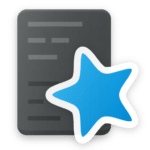
Sentence Mining in Japanese: What It Is and How to Do It
There’s no denying that becoming fluent in Japanese is a monumental task, one that takes time and determination to overcome
Sentence mining can make this process easier, with many learners finding it to be an effective technique. Keep reading this guide to find out how you can utilize the sentence mining method.
Contents
- What Is Sentence Mining?
- How to Mine Sentences in Japanese
- The Best SRS Resources for Sentence Mining
- And One More Thing...
Download: This blog post is available as a convenient and portable PDF that you can take anywhere. Click here to get a copy. (Download)
What Is Sentence Mining?
Sentence mining was developed by two Polish men who became fluent in English before ever leaving their own country. You can read all about their journey on the Antimoon website.
Sentence mining revolves around learning whole sentences and their component parts together and in depth. Rather than focusing on lists of isolated sentence parts, you learn words and grammar in their natural context.
The Benefits of Sentence Mining
There are several benefits to learning this way. For one thing, you’re more likely to use the language naturally, rather than try to translate from your native language into Japanese (which risks making you sound like a translation app).
In addition, learning kanji readings as they’re used in vocabulary will allow you to learn the more common readings first, as they’ll naturally occur more often. This saves you time by emphasizing what you need to know the most. You can save rare or archaic readings for when you’ve mastered the everyday ones.
Learning kanji one by one in isolation, on the other hand, means you have to learn vocabulary and the phonetic readings of those kanji separately. While this may work for some learners, it can take much longer.
Most Japanese words, especially nouns, are written using several kanji together. Examples include even very basic words such as 少女 (しょうじょ) — girl, 動物 (どうぶつ) — animal, 学校 (がっこう) — school and, of course, 日本 (にほん) — Japan.
Learning the separate kanji isn’t as memorable or easy as learning them together—once you see 日本, for instance, you’ll never forget these kanji, making them easier to recognize in other contexts.
If you’re advanced enough to be consuming authentic Japanese content, it can be fun to try and watch or read for meaning. But it’s also important to master the finer points of grammar to be sure you’re expressing yourself clearly. Sentence mining can help you focus your studies and take a deeper, more involved look at the language used in your favorite manga, drama or light novel.
Finally, isolated learning carries with it the risk that you’ll neglect an aspect that you find less appealing, such as grammar rules, only to find later that you struggle without thorough knowledge of that topic. By using sentence mining, you can integrate your learning and avoid the pitfalls associated with learning in a compartmentalized way.
How to Mine Sentences in Japanese
There are three basic steps to sentence mine effectively in Japanese:
1. Find sentences that contain examples of the concept you wish to learn (grammar, vocabulary or both). Sentences need to be accurate and natural to avoid wasting your efforts. We’ll discuss this in a bit!
2. Input these sentences into an SRS program or your preferred memorization method. BritvsJapan has a great video that goes over this in detail.
3. Study and review the sentences until you’ve mastered them. The goal is to understand all kanji, grammar and vocabulary as it’s used in the sentence.
Focus on Japanese-to-English translations first, adding English-to-Japanese cards if you need any (of problem words, for instance) once you have more knowledge under your belt.
You can break sentences down into their component parts, making flashcards for each vocabulary item or grammar concept used in the sentence.
Flashcards can be traditional, simply displaying the full sentence or its parts, or you can mix things up by turning sentences into fill-in-the-gap questions. This’ll push you further toward being able to independently produce the sentence or any of its component parts.
You can find additional helpful information from Antimoon about different options for utilizing SRS with full sentences.
How to Find Good Japanese Sentences to Mine
Not all Japanese sources will be equally useful for this technique. “One Piece” may be your favorite manga, but speaking like a pirate may prove less appealing when trying to ace a job interview.
Similarly, if your goal is to grow closer to Japanese relatives, learning only very formal business Japanese may come across as cold and distant. Match your source to your language-learning goals.
Accuracy is essential. Without it, you risk embedding mistakes into your Japanese without realizing and wasting a lot of time having to un-learn them later. This means that sources like Twitter or Facebook, where slang is widely used and nobody’s proofreading the posts, aren’t recommended as sources for this method.
Good sources use natural, modern, everyday Japanese with thematic vocabulary that’s relevant to you. To find a suitable source, decide on your goals then match your sentence sources to those goals, taking into account the politeness level, any gendered language used and how up-to-date the source is (to avoid picking up outdated turns of phrase).
Here are some excellent places for finding sentences to mine:
- If you’re a manga addict or book worm, you can find more sentences to mine through reading materials. Keep in mind that you may need translations, depending on your current ability level.
- JLPT textbooks also provide carefully proofread sentences with perfect grammar. Vocabulary books in particular, such as the “Essential Vocabulary” for the JLPT series, are excellent for this purpose.
- News reports are perfect for formal advanced business Japanese, or you can try News in Slow Japanese if you’re not quite ready for authentic speech yet.
- SubstoSRS grabs subtitles from Japanese video resources, so if you want to mine sentences from a certain movie or anime, this free software is perfect for you.
- Gakuu has 150,000 free sentences and was compiled using the Tanaka Corpus, which comprises the base for many notable Japanese resources, such as Tatoeba and Jim Breen’s dictionary. Gakuu is a database of sentences in Japanese and their English translations. It’s a wonderful free resource, though the sentences may in some instances be archaic or unnatural.
Why You Should Avoid Furigana
To get the most out of your sentence mining, be sure to avoid using romaji (Roman letters) and furigana.
Furigana is hiragana or katakana written in small text above or beside a kanji to show you its phonetic reading. By using furigana, you’ll miss out on one of the greatest advantages of this technique! Remember that taking shortcuts around kanji learning will slow yourself down in the long run.
The Best SRS Resources for Sentence Mining
Using a Spaced Repetition System (SRS) to learn maximizes efficiency and optimizes your natural learning rhythm for the best retention possible.
SRS programs use an algorithm to show you words and phrases right when you’re about to forget them. This helps you cement knowledge in your long-term memory, as well as avoid wasting time reviewing items you already know well.
Anki
Anki is a powerful learning tool for any subject. It’s free for the desktop and on Android, though it requires a costly app on iOS devices.
Download shared decks or create your own SRS cards using Anki’s many customization options.
If you’d rather not start from scratch, the program’s large community of users has a ton of resources available for Japanese learners of all levels. A good place to start is with a deck of Japanese core vocabulary or get straight into full sentences with a deck of sample common sentences.
Memrise
This program offers a free platform with a cute user interface and easily searchable courses, many of which are created by the community. (Note that while you currently can’t search for user-made decks in the apps, you can add anything you’d like to learn to your profile through the website then access it through the apps.)
Memrise’s strength is in presenting vocabulary in a memorable context by using mnemonic devices to remember words.
While you can’t edit the options and customize decks like with Anki, Memrise offers a more user-friendly experience as well as free apps on both Android and iOS.
You can start with pre-made courses like one that features 60 simple sentences or even a huge traveler’s phrasebook of 500 sentences (but try not to rely on the romaji!).
FluentU
FluentU is an online language immersion program that uses native Japanese content with interactive subtitles, which come in handy for sentence mining.
If there are any words you don’t recognize in the subtitles, you can click on them to view the definition and example sentences.
You can also add these new words to a custom SRS flashcard deck. These flashcards contain other helpful aids, such as audio pronunciation, images and related videos, giving you as much information as possible for your sentence mining exercises.
Whatever resources you choose, give sentence mining a try. You might find that it helps you use your study time more efficiently.
Download: This blog post is available as a convenient and portable PDF that you can take anywhere. Click here to get a copy. (Download)
And One More Thing...
If you love learning Japanese with authentic materials, then I should also tell you more about FluentU.
FluentU naturally and gradually eases you into learning Japanese language and culture. You'll learn real Japanese as it's spoken in real life.
FluentU has a broad range of contemporary videos as you'll see below:

FluentU makes these native Japanese videos approachable through interactive transcripts. Tap on any word to look it up instantly.

All definitions have multiple examples, and they're written for Japanese learners like you. Tap to add words you'd like to review to a vocab list.

And FluentU has a learn mode which turns every video into a language learning lesson. You can always swipe left or right to see more examples.

The best part? FluentU keeps track of your vocabulary, and gives you extra practice with difficult words. It'll even remind you when it’s time to review what you’ve learned. You'll have a 100% personalized experience.
Start using the FluentU website on your computer or tablet or, better yet, download the FluentU app from the iTunes or Google Play store. Click here to take advantage of our current sale! (Expires at the end of this month.)





